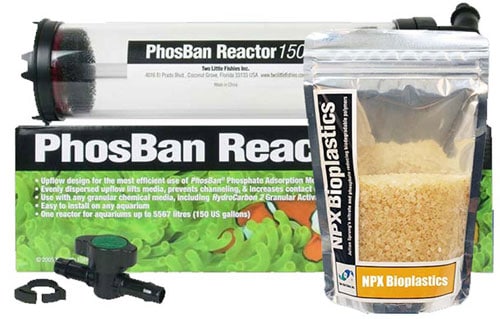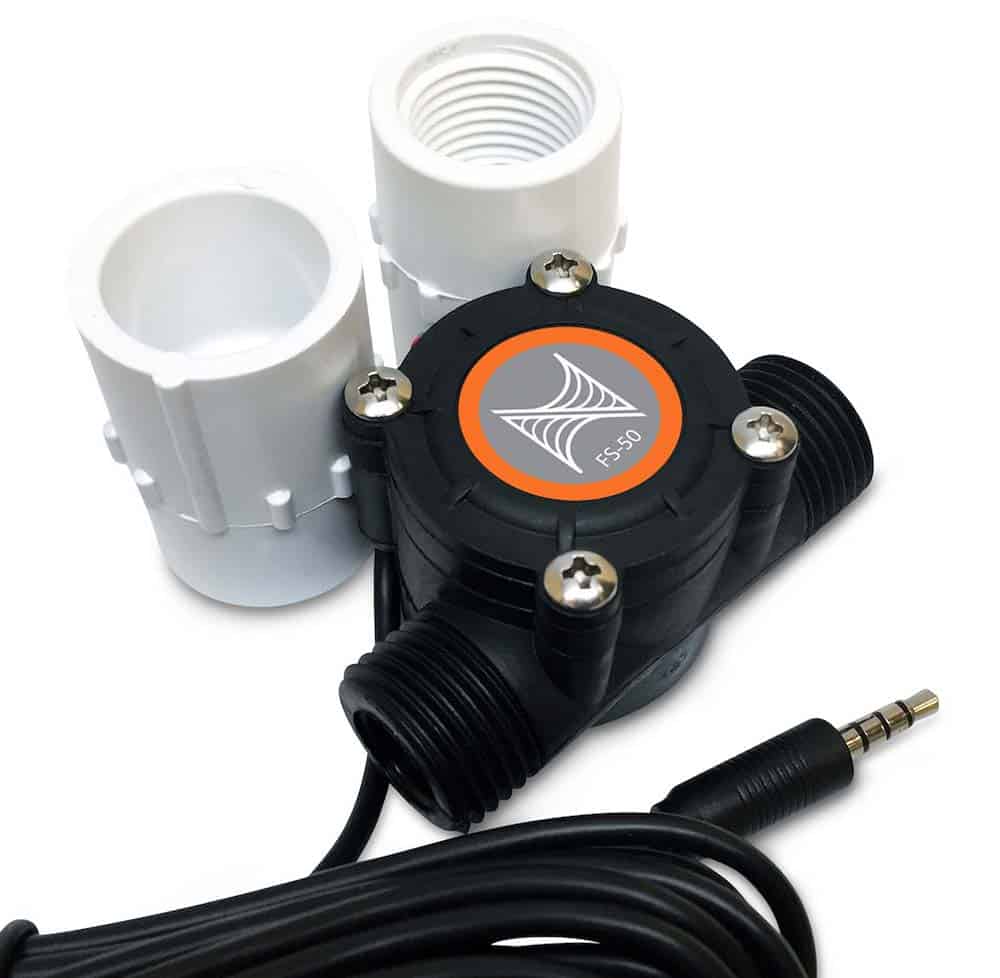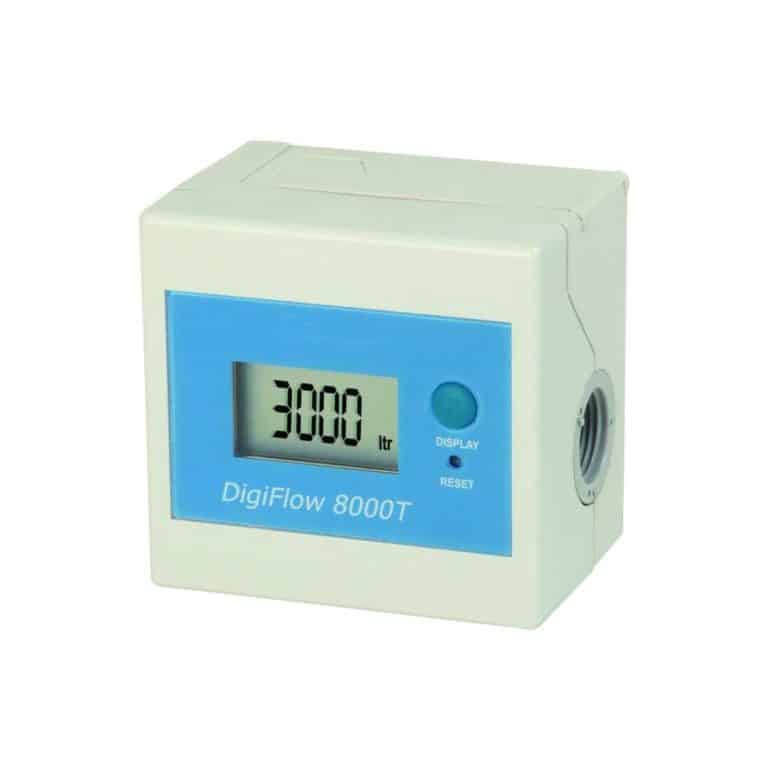When I first got into saltwater I kept hearing all about these reactors but had no idea what they were? To me when I think about reactors my mind goes to Nuclear Reactors! Could the aquarium media reactors be something that adds incredible cleaning or filtration to your system? Not Really!
Aquarium media reactors greatly improve the efficiency of filter media inside it by increasing the surface area and contact time between the media & the aquarium water as it is pumped through it. These simple containers allow easy mounting, cleaning and can be used singularly or mulitple together.
Media reactors are a great addition to your aquarium so let’s look at them in more detail.
How Does An Aquarium Media Reactor Work?
The basic media reactor is a vessel that contains a filter media. The water is then passed into the vessel either from a dedicated water pump or via a manifold fed off the return line from your sump to the display tank.
The water is then directed to the base of the vessel and allowed to flow upwards through the media before exiting through the top of the reactor.
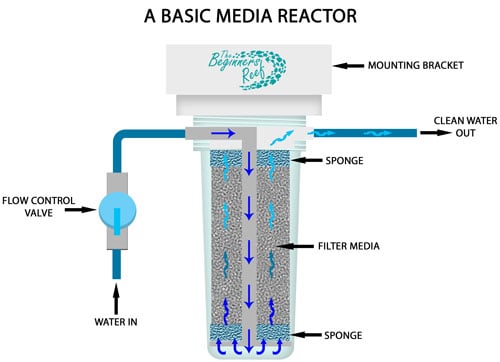
There are various types of reactor but the principle is always the same: Provide a way to maximize the contact time of the water and the filtration media to give the most efficient cleaning during its passage through the reactor.
In the most basic reactors, the filter media is stored between two sponges. This helps to prevent the filter media and any of its particulates to flow back into the aquarium with the passing water.
The flow control valve is there so you can fine-tune the flow rate through the media. Some filter media like Activated Carbon like a slow flow through it to allow maximum contact time, where-as BioPellets and GFO require a faster flow to allow the media to Bubble or Tumble.
The manufacturer of each media will provide details on the most efficient flow rate for its media.
Are There Different Types Of Aquarium Media Reactor?
Most aquarists start off with just one reactor to help with a problem they have in their tank. Activated Carbon or Granular Ferric Oxide are the two most common media ran in a reactor for a beginner aquarist.
There are two main types of reactor. The Simple, inexpensive reactor. Then the dedicated, sometimes complex and expensive reactors.
Simple Aquarium Reactors
Carbon Reactor
Using a reactor in the diagram above, Activated Carbon is placed in the canister between the two sponges. This was the first reactor I added to my system, like many other hobbyists.
It requires a fairly slow flow and I normally change out my carbon every month.
A great way to see when your carbon is depleted is to run some of the water from the reactor outlet into a white bucket. If the water has a yellow tint to it, its time to change the carbon media.
GFO Reactor
Granular Ferric Oxide or GFO as its more commonly known is a great product for helping to reduce Phosphates. By using the same setup as above but filling the canister only half full will allow the GFO to ‘Bubble’ once you have the flow rate set correctly.
When I ran GFO I would replace the media every 4-6 weeks.
BioPellet Reactors
BioPellets are a synthetic steroid used to feed the bacteria that help convert and/or remove Nitrates from your system. They come in a pellet form and work best when they all tumble over one another like a ‘Bingo Ball’ machine.
There are dedicated BioPellet reactors on the market that do a great job of creating the right flow to tumble the beads, but you can make a simple reactor above into a BioPellet Reactor.
I removed the bottom sponge and just had the mesh plate on the bottom, added the BioPellets, then adjusted the flow to get them tumbling. It works very well.
BioPellets will slowly dissolve as they are consumed, you just open up the reactor and keep the mass of pellets topped up.
1 cup of BioPellets is usually recommended for every 50 Gallons of water volume
I have installed this kit on many aquariums to run either Activated Carbon, GFO or BioPellets and it works fantastic. Super easy to set up, cheap to buy at $65 and easy to maintain. Just match the pump to provide the flow rate required for the media being used.
I would highly recommend this kit if you are looking to add your first BioPellet reactor to your aquarium. Sump or no sump!
You can find the Reactor HERE and the Bio Pellets Here at Amazon.com
Advanced Aquarium Reactors
Once you begin to get really serious and you are looking to install a large aquarium then the advanced reactors are going to be part of your filtration team. These reactors I would not recommend for the beginner, especially on a small aquarium.
Calcium Reactor
This is a reactor designed to use CO2 (Carbon Dioxide Gas) to melt dead coral skeletons to return the Calcium, Alkalinity and Magnesium elements back into your water in a very controlled way.
These reactors are usually installed when water changes and daily dosing of the mentioned elements just cannot keep up with the heavy consumption of a large, mature coral reef aquarium.
They will begin at several hundred dollars for a basic setup and require a constant feed of CO2 from a dedicated bottle.
Kalk Reactor
Kalkwasser or Kalk for short, is German for ‘Lime Water’. It is a powdered form of lime that makes a strong solution of Calcium Hydroxide when mixed with water, a building block of coral skeletons.
A Kalk reactor is usually a vessel that has a long rod with a stirring paddle on the end of it. The Kalk powder is placed at the bottom of the vessel and water is slowly passed through it. As the water passes through, the stirring action of the Kalk powder turns the water into a concentrated solution of Calcium Hydroxide.
This is another method of providing medium-growing, medium-consuming corals the elements they need in order to grow.
Again, an expensive reactor to set up and not for the beginner.
Here is a great video to give you more information:
Zeovit Reactor
A Zeovit Reactor is a specifically designed reactor to work as part of the Zeovit Ultra Low Nutrient System. This is a system of bacteria that help to remove waste from your aquarium then selective dosing will help to feed the coral for maximum color and growth.
The program tries to mimic natural seawater to provide the best quality water for your coral. It is a fairly expensive program to run and maintain and not really designed for the beginner hobbyist.
The Zeovit reactor is designed to help grow the necessary bacteria required for the Zeovit program. Each day you give the handle on the reactor ‘A Pump’ to dislodge the bacteria off the media and allow the coral to feed off it.
How Do You Install An Aquarium Media Reactor?
Due to the vast availability and types of media reactors, you will have no problem finding a reactor to fit your system. They come in a range of sizes to suit every system size, some are designed to hang on the side of a sump or aquarium, or they can sit inside or outside of your sump.
The manufacturers have been clever to allow each reactor as many mounting options as possible to help sell their product.
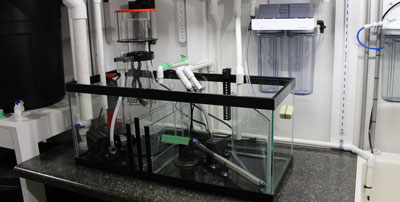
Each reactor will need to have water moved through it and its placement will be shown in the instructions. Water from a pump or Return Pump Manifold will need to be plumbed to the reactor and back to the tank/sump.
Generally, there are 3 mounting options:
- Hang the reactor on the inside or outside of your sump. Inside works good if you are limited to space around the sump and if it develops a leak it will drain into the sump
- Stand or mount the reactor outside of the sump. This can be done to provide easy access for maintaining, cleaning and replacing the media
- Stand the reactor inside the sump. As in option 1, but these are usually larger reactors and you will need to have a larger sump to be able to fit the reactor
If you do not own a sump, the reactor could be hung on the back of your aquarium with many of the HOB type reactors having a built-in pump.
>>To view a wide variety of Media Reactors CLICK HERE to head over to Amazon.com<<
How To Measure Flow Rate Through An Aquarium Media Reactor
Setting up the recommended flow rate through the reactor is paramount to ensure the filter media is working at its most efficient. Each manufacturer will display the flow rate required and it’s best to try and match as close to it as you can.
There are two ways to figure it out: An expensive way and a free way!
Expensive Way
If you are one of the ‘Tech Junkies’ in this hobby and love gadgets then there is a flow rate sensor kit for the Neptune Systems Apex aquarium controller.
Simply insert the sensor into the output pipe from the reactor and adjust the flow control valve until the controller value matches the desired flow rate.
The flow sensor is only around $30, but the Flow Management Module and the Aquarium Controller to run it are costly. But, if you already have the aquarium controller (Which you will not live without once you have one!), this is a great addition to the automated system.
Cheaper Way
These great little battery-operated flow meters on Amazon.com allow you to connect a range of plumbing fittings to them so you can test the flow from the most commonly used 1/4″ and 1/2″ hoses in our aquarium hobby:
Max Flow Rate = 3.72 gpm / 14.1 lpm
Min Flow Rate = 0.40 gpm / 1.5 lpm
Find This Flow Meter Here at Amazon.com
You Can also find the user manual for this meter from the manufacturers’ website HERE
It comes complete with quick connections for 1/4″ RO/DI hoses and if you need some hose tails to connect 1/2″ hoses they seem to be difficult find but these 3/8″ hose tails will work in addition to some adustable pipe clamps which you can find at Amazon.com:
3/8′ Hose Barbs Here
Adjustable Pipe Clamps Here
Free Way
Take the output pipe from the reactor and place it into a bucket and turn on the pump for 15 seconds.
After 15 seconds measure the amount of water you have in the bucket and multiply it by 4 to get your Gallons Per Hour flow rate.
Adjust the valve and repeat until you have the desired flow rate, then place the output hose back into the sump. Done.
Further Questions
Can I not just place the media in a mesh bag?
If space is at a premium you can absolutely run the media in a mesh bag but it will not work as efficient. The reactors job is to allow the most amount of contact between the water and the media. You may find the media will clump together in a bag and require replacing more frequently.
Can I use multiple media reactors?
Absolutely! Each reactor plays its own role in the effective filtration in an aquarium. If you can find a space to install a reactor for each media I would definitely install the type of reactor designed specifically for that media. This way you will get the most efficient work from the media.
How long will the filter media last in a reactor?
Each type of filter media is different and even the same type of media from different manufacturers can have different effective working times. It is always best to read the instructions on the packaging or visit the manufacturer’s website to find the optimum working period. These are also guidelines and your aquarium may deplete it quicker or slower. Over time you will begin to know when its time to replace the media.

